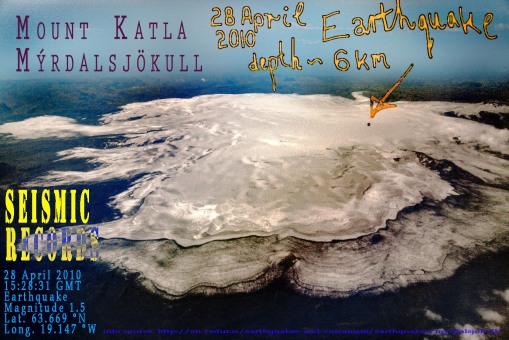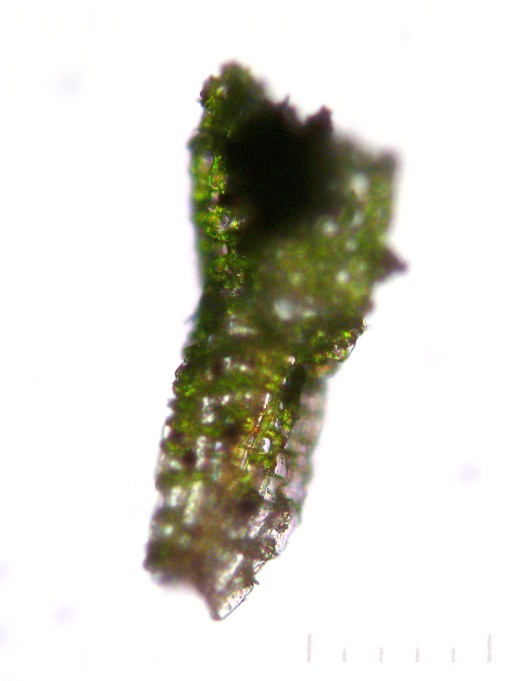A view of the Sermeq Avannarleq glacier in Western Greenland and its ice front, 29th May 2013. Take out the window during a flight from London to San Francisco. I did not know which glacier it was until late September when I found it on Google Earth at 70° 3’3.24″N, 50°19’1.22″W. Click on the photo for a full size view. According to the Byrd Polar Research Center, the Sermeq Avannarleq glacier lost 2 square miles from its ice front in 2007 and again in 2008. Increasingly rapid movement of this and other glaciers in south west Greenland is likely caused by surface melt waters percolating into the glacier, warming and lubricating the ice. You can find more scientific details in the AGU press release about Phillips et al., 2013.
Sermeq Avannarleq glacier, Torsukattak ice fjord, western Greenland late May 2013
27 09 2013Comments : Leave a Comment »
Tags: black, blue, Byrd Polar Research Center, Climate change, glacier, Google Earth, Greenland, ice, ice front, icebergs, out the window, photographic art, Sermeq Avannarleq, white
Categories : Landscape series, Science
Seismic tremor under Katla
29 04 2010
The Earth shook directly under Mount Katla in Iceland when a small earthquake (magnitude 1.5) was detected at about 6 km depth on Wed 28th April 2010. Is the giant awakening? UPDATE: Another earthquake occurred under Katla. The original 28th April 2010 earthquake is now being reported as two simultaneous earthquakes, one at 7.1 km (magnitude Ml=1.0) and another at 0.5 km depth (Ml=1.5). Heidi Soosalu writing on Katla seismicity (Journal of Volcanology and Geothermal Research, vol 153 177-186, 2006) states that Katla has seasonal earthquake activity. These tremors usually occur later in the year probably because of changes in glacial melting and groundwater pressure in the roof of the caldera. Seismic shocks shake two distinct areas of Katla, the Goðabunga rise on the west side, and the caldera area in the center of Katla. The latest two earthquakes are associated with the rim of the caldera. A third earthquake occurred today on the southern slopes of Katla (magnitude 1.7 at about 7km depth). Since 2002, seismic activity has been fairly continuous over and above the seasonal effect, particularly on the Goðabunga rise during 2001-2004. However a seasonal effect is still evident - earthquakes are less frequent in winter. The increased seismic activity since 2001-2002 is attributed to acceleration of a rising dome of highly silicic, viscous magma 1.5km down stressing and deforming the roof above it. Inflation of the volcano and increased geothermal activity have accompanied the increased seismicity since 1999. Because of the rising dome under Goðabunga rise, several eruption scenarios are worth considering besides the more "traditional" basaltic eruption from the caldera. These include a more silicic style event, a type that has not occurred in Katla for more than 1700 years, and could be extremely violent. Seismicity preceding silicic eruptions have been noted by Soosalu et al 2006 at Unzen in Japan and in the Soufrière Hills of Montserrat in the context of a silicic Katla eruption. The good news so far is that the current seismicity cannot be easily attributed to anything but ongoing activity started in 1999. Signs of an imminent eruption will include further increases in hydrothermal activity and ground uplift - neither of which have been reported as anomalous so far. The not so good news is that post-1999 earthquakes shout loudly at us to not ignore the slumbering beast, and accept the possibility that an explosive eruption from the Goðabunga rise on the west side of Katla could be more than a little bit bigger than the current Eyjafjallajökull eruption! Image © Robert Corkery 2010.
Comments : Leave a Comment »
Tags: 2010, earthquake, Eyjafjallajökull, glacier, ice, Iceland, Katla, magma, Mýrdalsjökull, mount, mountain, sea, seismic, sky, volcanic, Volcano
Categories : Landscape series, Poster series I, Science, Temporary news
Under the microscope – ash of Eyjafjallajökull volcano – VII
24 04 2010
Green glass shard that fell as volcanic ash on Sweden 15th-16th April from the eruption of Eyjafjallajökull. Scale is 25 microns. This particle was removed from a larger, 1mm ash particle and viewed with a Zeiss microscope without using crossed polarizers, like in the last post. The colour in this photo is entirely due to the presence of iron and other metals in the glass.
Comments : Leave a Comment »
Tags: 2010, eruption, Eyjafjallajökull, glacier, glass, green, Iceland, microscope, photographic art, volcanic, Volcano, white
Categories : Science
Ash of Eyjafjallajökull VI
24 04 2010
Mineral ash from the Eyjafjallajökull volcano. This crystalline shard of mineral dust fell on Sweden on 15th-16th April 2010 as seen through a Zeiss polarizing microscope. The colour is due to birefringence typical of crystals rather than glass. This particle was removed from a larger ash particle about 1mm in size. The same particle was "glued" together with much smaller particles and was accompanied by particles of glass. A dense cloud of 1mm particles each made of shards like this can do serious damage to a jet engine. The graduated scale shown is 50 microns.
Comments : Leave a Comment »
Tags: ash, cloud, eruption, Eyjafjallajökull, glacier, Iceland, jet engine, microscope, mineral, polarizing microscopy, volcanic, Volcano
Categories : Science
Skógafoss I
16 04 2010
Skógafoss - waterfall in Iceland celebrated for its shear stupendousness. Imagine what it is like with extra flow from volcanic glacial meltwaters. Above the falls is the pass called Fimmvörðuháls where the original March eruption occurred between the two glaciers Eyjafjallajökull and Mýrdalsjökull. The April eruption choking down commercial jet flight lanes with ash is from a fissure in the south rim of the central caldera about 8 km west of the March site, directly under the Eyjafjallajökull glacier. Mýrdalsjökulglacier to the east sits on top of Katla volcano - a more threatening and powerful beast, but quiet for now.....
Comments : Leave a Comment »
Tags: ash, eruption, Eyjafjallajökull, Fimmvörðuháls, glacial river, glacier, Iceland, Katla, Mýrdalsjökul, Skógafoss, volcanic, Volcano, waterfall
Categories : Landscape series
Seljalandsfoss – waterfall Iceland
16 04 2010Comments : Leave a Comment »
Tags: ash, cloud, eruption, Eyjafjallajökull, glacier, Iceland, photographic art, Seljalandsfoss, volcanic, Volcano, waterfall
Categories : Landscape series
Mýrdalsjökull glacier and the Katla volcano, Iceland
16 04 2010Comments : Leave a Comment »
Tags: aerial, ash, eruption, glacier, Iceland, Katla, Mýrdalsjökull, photographic art, volcanic, Volcano
Categories : Landscape series


